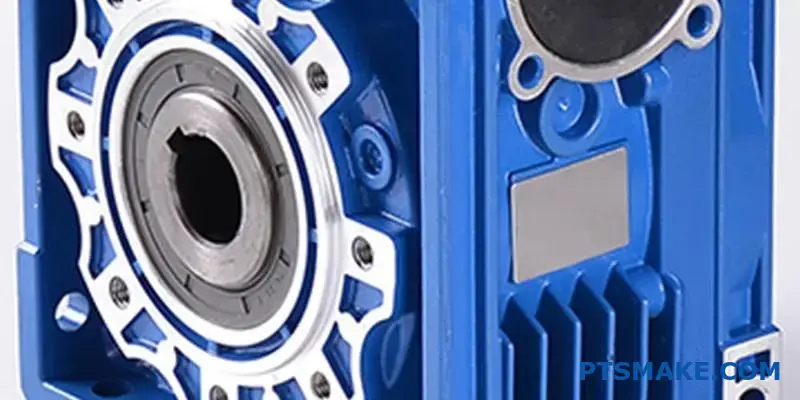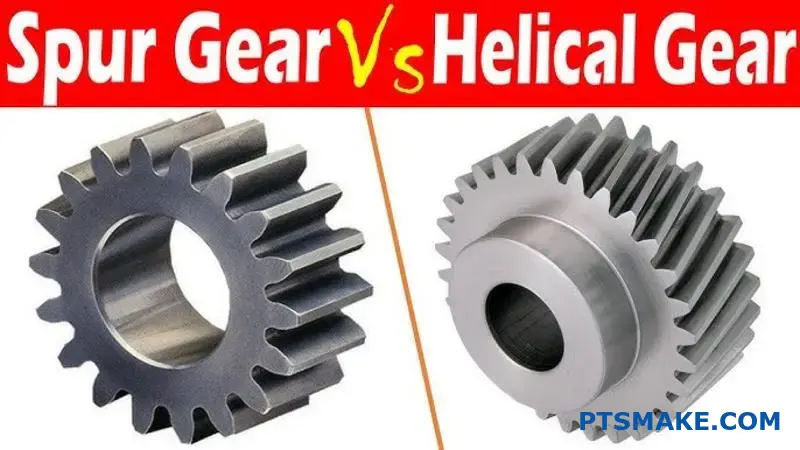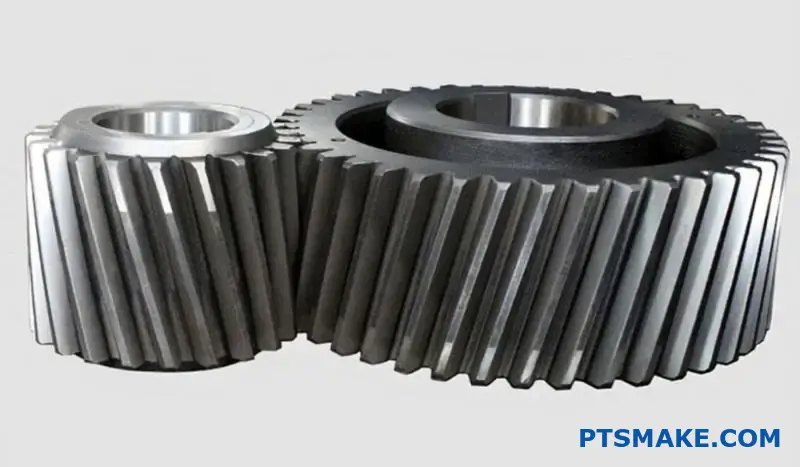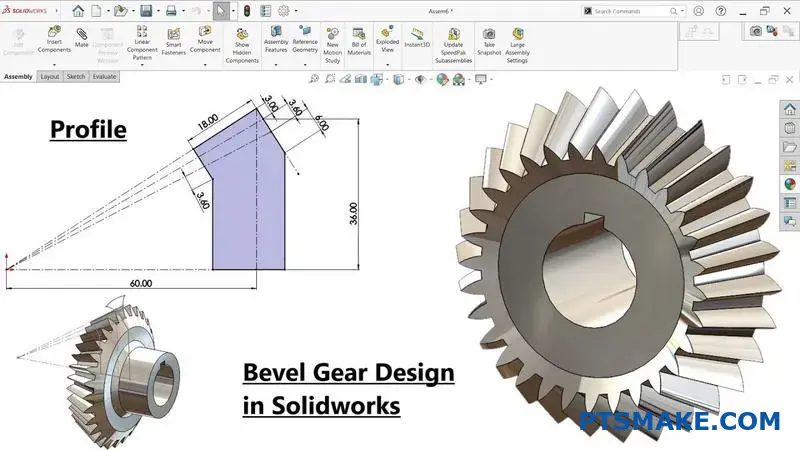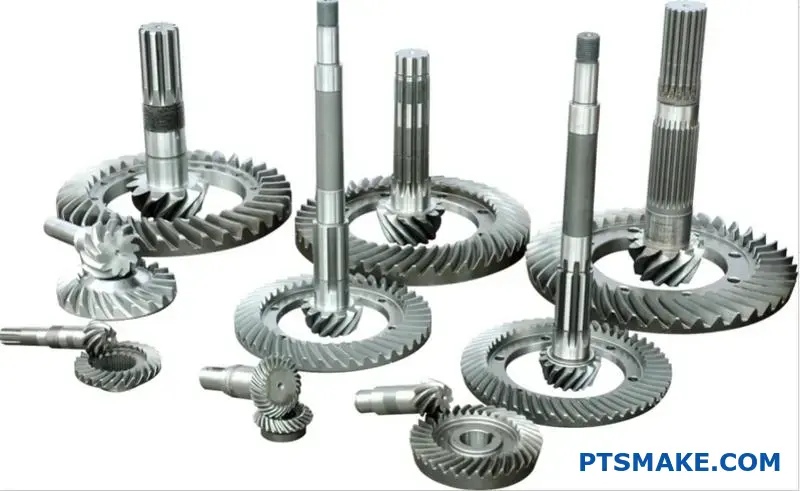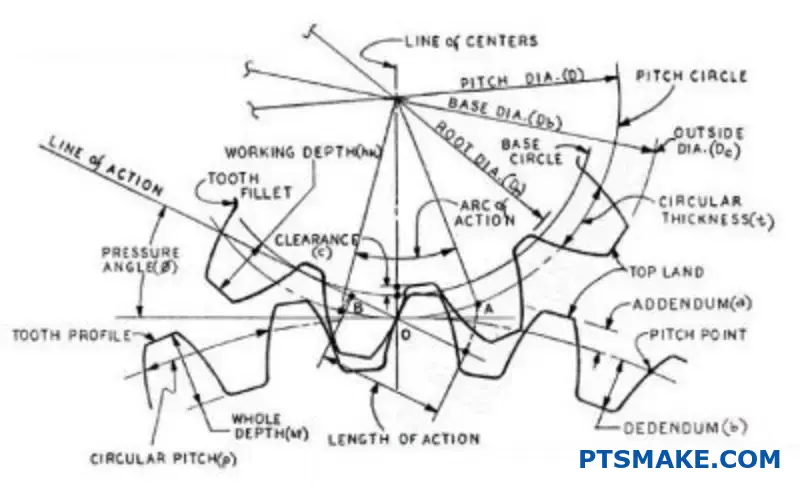Was ist kleine CNC-Bearbeitung?
Haben Sie mit hohen Kosten und langen Vorlaufzeiten für kleine, komplizierte Teile zu kämpfen? Behindern herkömmliche Fertigungsmethoden Ihren Produktentwicklungszyklus und belasten Ihr Budget bei Projekten, die keinen großen Maschinenpark erfordern?
Die kleine CNC-Bearbeitung bietet eine leistungsstarke Lösung. Sie ermöglicht erhebliche Kosteneinsparungen, schnelleres Prototyping und kürzere Rüstzeiten bei geringeren Anfangsinvestitionen und liefert gleichzeitig die hochpräzise Qualität, die Ihr Unternehmen für komplexe Komponenten benötigt.
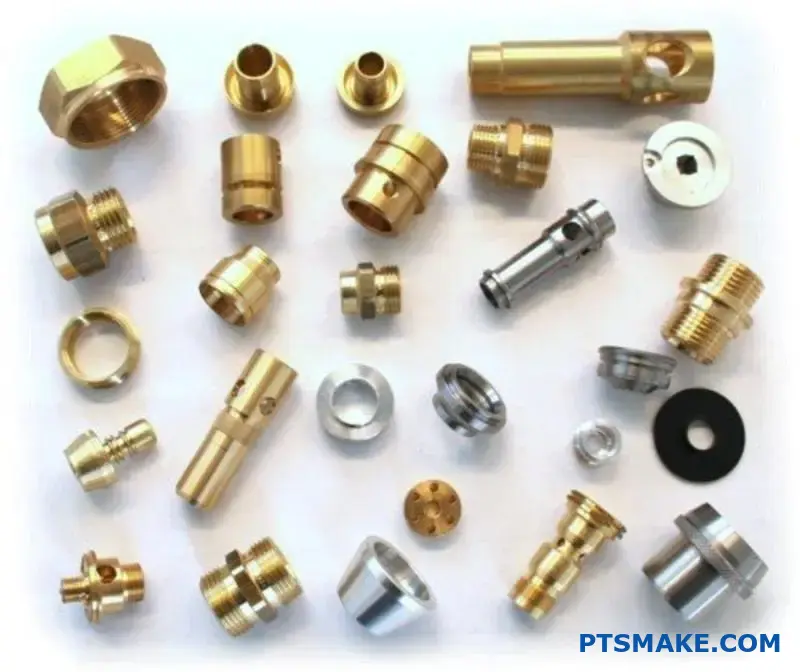
Die CNC-Bearbeitung von Kleinteilen ist eine äußerst effiziente Alternative für viele Fertigungsanforderungen. Bei früheren Projekten konnten wir feststellen, dass unsere Kunden nicht nur beim Endpreis der Teile, sondern auch im gesamten Produktionsprozess erhebliche Einsparungen erzielen konnten. Der Hauptvorteil liegt in den geringeren Betriebskosten. Kleinere Maschinen verbrauchen weniger Energie und verwenden oft günstigere Werkzeuge. Außerdem ist der Einrichtungsprozess von Natur aus schneller und einfacher. Diese Flexibilität ermöglicht einen schnelleren Wechsel zwischen den Aufträgen, was für Produktionsläufe mit hohen Stückzahlen und geringen Stückzahlen ein entscheidender Vorteil ist. Effiziente Werkzeugwegoptimierung1 steigert diese Vorteile noch, indem es die Maschinenzeit und den Materialabfall minimiert, was sich direkt auf Ihr Endergebnis auswirkt.
Senkung der Betriebskosten
Einer der direktesten Vorteile ist die Senkung der laufenden Betriebskosten.
Vergleich von Einrichtungszeit und Kosten
| Merkmal | Kleine CNC-Bearbeitung | Großflächige CNC-Bearbeitung |
|---|---|---|
| Avg. Einrichtungszeit | 1-2 Stunden | 4-8+ Stunden |
| Energieverbrauch | Niedrig bis mittel | Hoch |
| Werkzeugkosten | Unter | Höher |
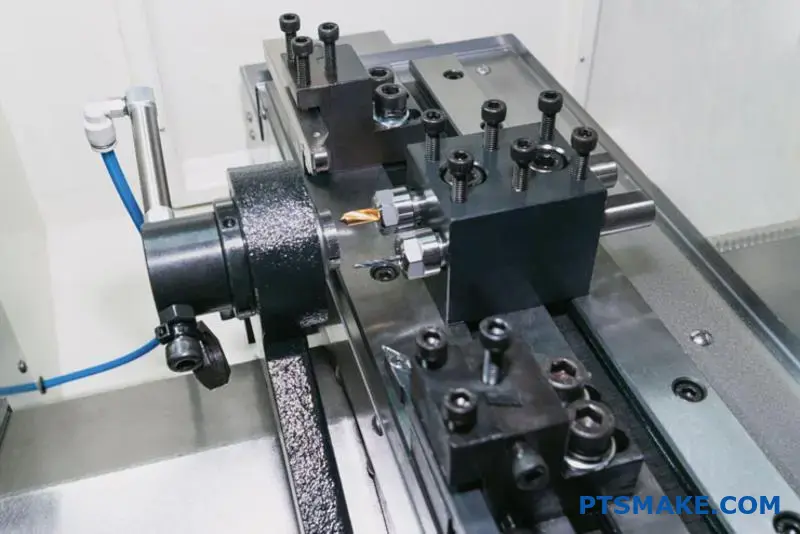
Über die betriebliche Effizienz hinaus erstrecken sich die strategischen Vorteile der kleinen CNC-Bearbeitung direkt auf den Lebenszyklus Ihrer Produktentwicklung. Die Fähigkeit, Prototypen und Kleinserien schnell herzustellen, ist auf dem heutigen schnelllebigen Markt von unschätzbarem Wert.
Beschleunigung der Innovation durch Rapid Prototyping
Nach unserer Erfahrung bei PTSMAKE ist ein schnellerer Iterationszyklus ein entscheidender Faktor für Innovation. Kleine CNC-Bearbeitungsmaschinen ermöglichen es den Ingenieuren, physische Teile innerhalb von Tagen und nicht Wochen in Händen zu halten. Diese Geschwindigkeit ermöglicht ein schnelles Testen, Validieren und Verfeinern von Entwürfen und hilft Ihnen, schneller und mit einem robusteren Produkt auf den Markt zu kommen.
Senkung der Zutrittsschranke
Der geringere Investitionsbedarf macht die Hochpräzisionsfertigung leichter zugänglich. Dadurch können Start-ups und kleine Unternehmen mit größeren Unternehmen konkurrieren, ohne die massiven Investitionen und die Infrastruktur zu benötigen, die für Großmaschinen erforderlich sind.
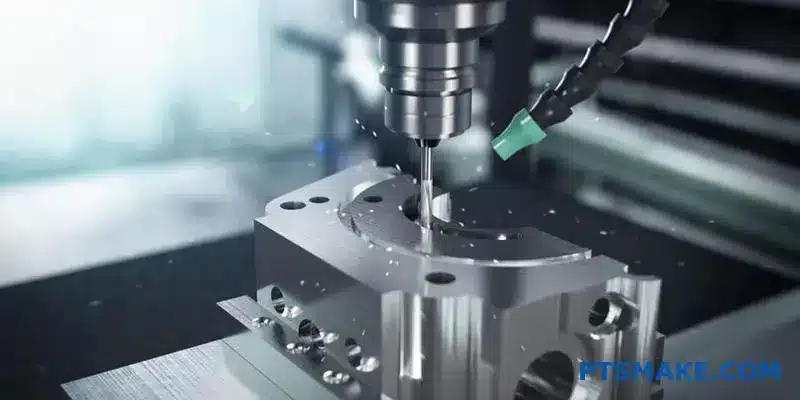
Kurz gesagt, die kleine CNC-Bearbeitung ist ein strategischer Vorteil. Sie senkt die Herstellungskosten und beschleunigt Ihre Prototyping-Phase, indem sie qualitativ hochwertige Teile ohne die finanzielle Belastung oder die Verzögerungen von Großprojekten liefert. Das macht sie ideal für die Anforderungen moderner, agiler Unternehmen.
Überlegungen zum Budget: Kostenanalyse für kleine CNC-Anlagen?
Haben Sie schon einmal festgestellt, dass der Aufkleberpreis für ein neues Gerät nur der Anfang ist? Diese unerwarteten Ausgaben für Werkzeuge, Software und Wartung können eine gute Investition schnell in einen finanziellen Alptraum verwandeln.
Eine gründliche Kostenanalyse für kleine CNC-Ausrüstungen muss über den Erstkauf hinausgehen. Die Berücksichtigung von Werkzeug-, Software-, Wartungs- und Betriebskosten ist entscheidend, um die Gesamtinvestition genau zu prognostizieren und eine positive Rendite zu gewährleisten.
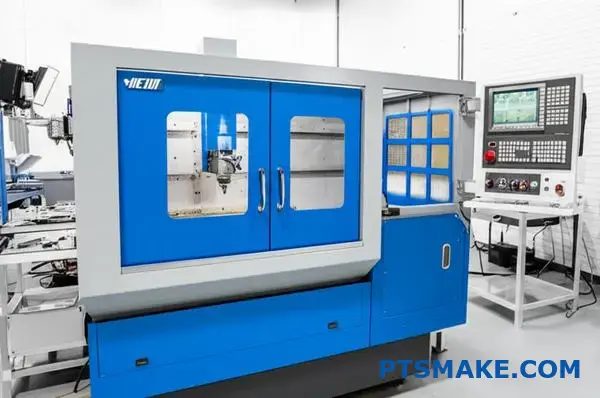
Die Vorabinvestition: Mehr als nur die Maschine
Der Anschaffungspreis ist der sichtbarste Teil der Kosten, aber er ist nur ein Teil der Gleichung. Um ein effektives Budget zu erstellen, müssen Sie alle Elemente berücksichtigen, die erforderlich sind, um Ihre Maschine betriebsbereit zu machen. Wenn wir bei PTSMAKE Kunden beraten, die eine interne Produktion in Erwägung ziehen, betonen wir immer, dass wir das Gesamtbild betrachten. Die anfängliche Einrichtung umfasst die Maschine selbst, die erforderlichen Werkzeuge und die Software für den Betrieb der Maschine. Wird eine dieser Komponenten vernachlässigt, kann dies zu Verzögerungen und unvorhergesehenen Kosten führen. Wirksam Werkstückträger2 Lösungen sind zum Beispiel entscheidend für die Präzision bei kleinen CNC-Bearbeitungsprojekten.
Anfängliche Kostenaufschlüsselung
| Kostenkomponente | Beschreibung | Relative Wichtigkeit |
|---|---|---|
| Kauf einer Maschine | Der Grundpreis des 3-Achsen- oder 5-Achsen-Geräts. | Hoch |
| Erstausstattung mit Werkzeugen | Fräser, Schaftfräser, Bohrer und Halter. | Mittel |
| Software (CAD/CAM) | Für die Konstruktion von Teilen und die Erzeugung von Werkzeugwegen. | Mittel |
| Versand & Installation | Fracht, Takelage und professioneller Aufbau. | Niedrig |
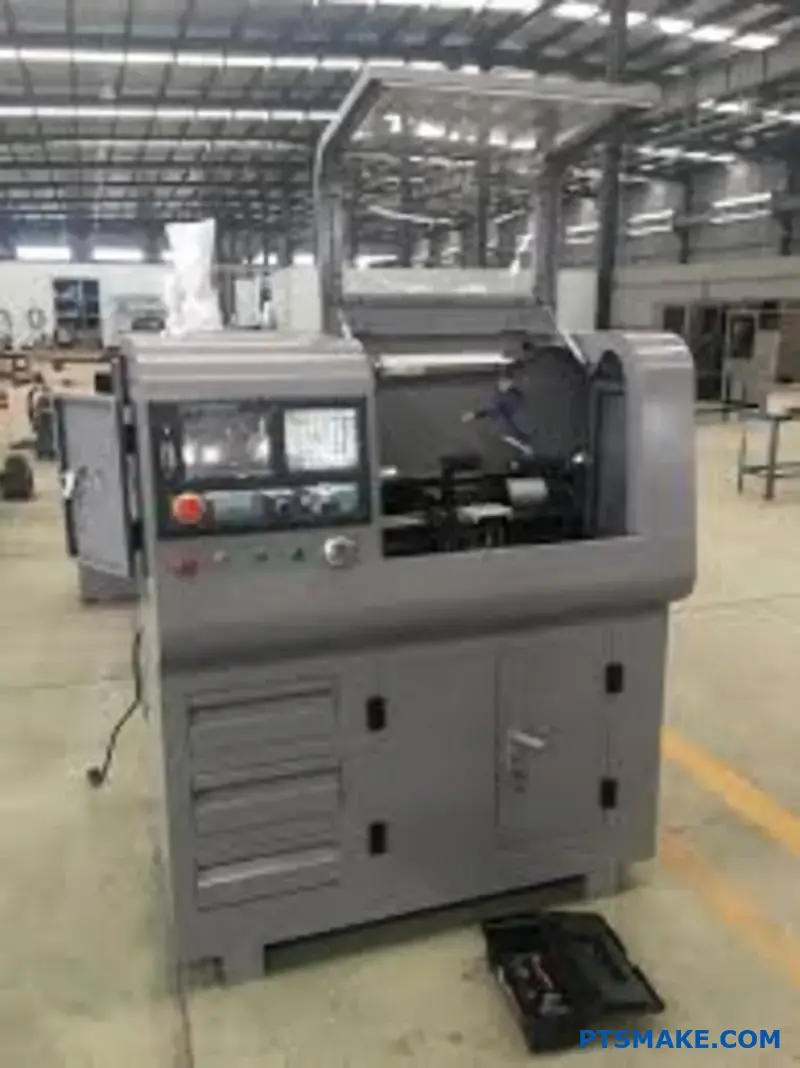
Über den Kauf hinaus: Laufende Betriebskosten
Sobald Ihre Maschine in Betrieb ist, müssen Sie die wiederkehrenden Ausgaben berücksichtigen. Diese laufenden Kosten sind entscheidend für die Aufrechterhaltung der Leistung, die Gewährleistung der Qualität und die Maximierung der Lebensdauer Ihrer Ausrüstung. Wenn Sie vergessen, diese Kosten einzuplanen, kann sich dies negativ auf Ihre langfristige Rentabilität und die Qualität Ihrer Teile auswirken. Unsere Erfahrung mit unzähligen kleinen CNC-Bearbeitungsbetrieben hat gezeigt, dass eine konsequente Wartung und die Qualifikation der Bediener die wichtigsten Faktoren für den langfristigen Erfolg sind. Dabei handelt es sich nicht um einmalige Kosten, sondern um kontinuierliche Investitionen in Ihre Produktionskapazität.
Übersicht über wiederkehrende Ausgaben
| Laufende Kosten | Frequenz | Auswirkungen auf den ROI |
|---|---|---|
| Vorbeugende Wartung | vierteljährlich/jährlich | Hoch (Verhindert Ausfallzeiten) |
| Werkzeug-Ersatz | Pro Projekt/Wear-based | Mittel |
| Verbrauchsmaterial | Täglich/Wöchentlich | Niedrig |
| Bedienerschulung | Nach Bedarf | Hoch (Sichert Qualität) |
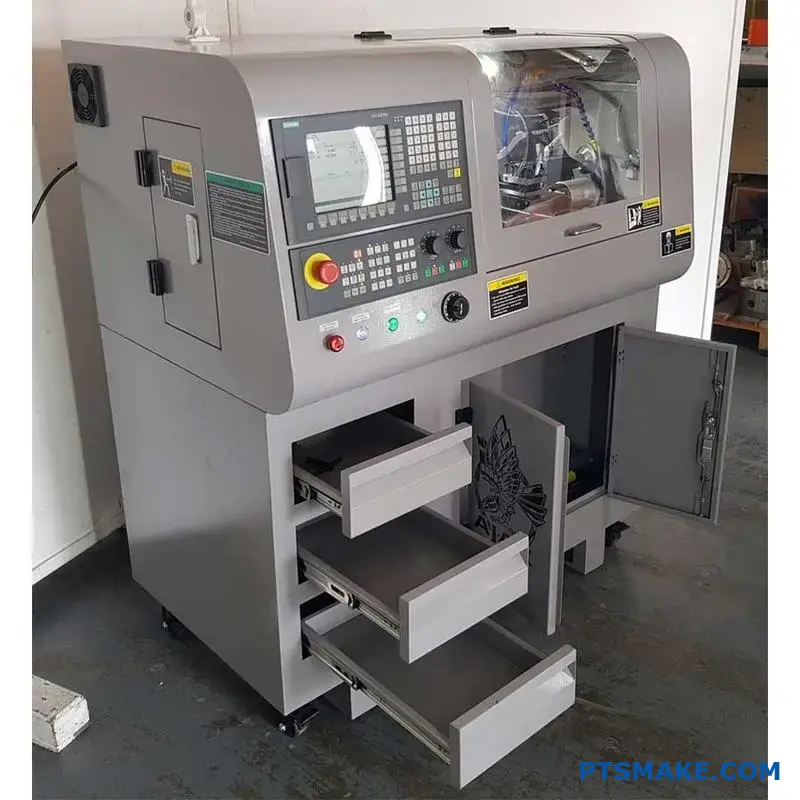
Um eine kluge Investition in kleine CNC-Anlagen zu tätigen, müssen Sie den gesamten finanziellen Rahmen analysieren. Ein echtes Budget berücksichtigt den Erstkauf, wichtige Werkzeuge und Software sowie langfristige Betriebskosten wie Wartung und Schulung. Diese umfassende Betrachtung gewährleistet eine nachhaltige und rentable Entscheidung.
Materialkapazitäten: Was können kleine CNC-Maschinen bewältigen?
Haben Sie schon einmal ein Material für Ihren Prototyp ausgewählt, um dann festzustellen, dass es sich nicht für die CNC-Bearbeitung eignet? Diese Diskrepanz kann zu Projektverzögerungen führen und Ihr Budget unerwartet aufblähen.
Kleine CNC-Maschinen sind erstaunlich vielseitig. Sie eignen sich hervorragend für Materialien wie Aluminium, verschiedene Kunststoffe und Holz. Sie bearbeiten auch weiche Metalle wie Messing und Kupfer, aber der Erfolg hängt stark von der Materialhärte und -dicke ab, die bei jedem Projekt zu berücksichtigen sind.
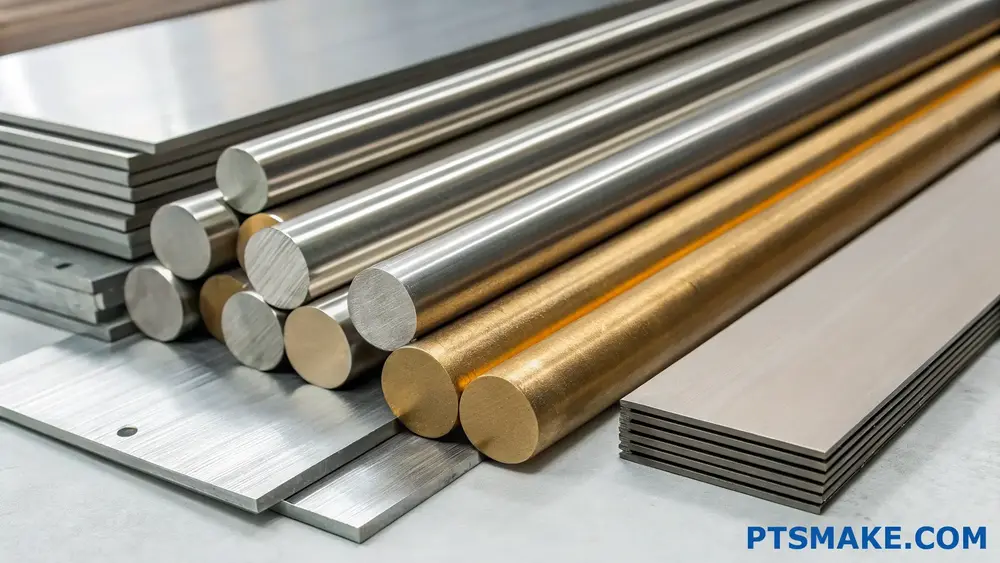
Die Fähigkeiten von kleinen CNC-Maschinen werden oft unterschätzt. Sie können zwar keinen gehärteten Stahl bearbeiten wie ihre größeren Pendants aus der Industrie, aber sie eignen sich hervorragend für Präzisionsarbeiten mit einer bestimmten Bandbreite von Materialien. Bei früheren Projekten von PTSMAKE haben wir festgestellt, dass das Verständnis dieses "Sweet Spots" der Schlüssel zum erfolgreichen Prototyping und zur Produktion ist.
Weichere Metalle: Die beste Wahl
Aluminium, insbesondere die Sorte 6061, ist aufgrund seines hervorragenden Verhältnisses von Festigkeit zu Gewicht und seiner Bearbeitbarkeit ein beliebtes Material für die CNC-Bearbeitung kleiner Werkstücke. Es ermöglicht schnelle Zykluszeiten und eine hervorragende Oberflächengüte.
Technische Kunststoffe: Die Kraftpakete des Prototyping
Kunststoffe sind unglaublich nützlich. Materialien wie Delrin (POM) bieten eine geringe Reibung für bewegliche Teile, während sich ABS hervorragend für allgemeine Prototypen eignet. Die Anisotropie3 in einigen gefüllten Kunststoffen erfordert jedoch eine sorgfältige Ausrichtung der Bearbeitung.
| Material | Bearbeitbarkeit | Gemeinsame Nutzung | Hauptmerkmal |
|---|---|---|---|
| Aluminium 6061 | Ausgezeichnet | Elektronische Gehäuse, Rahmen | Leicht und stark |
| Delrin (POM) | Ausgezeichnet | Zahnräder, Lager | Geringe Reibung, hohe Steifigkeit |
| ABS | Gut | Funktionale Prototypen | Schlagfest, leicht zu bearbeiten |
| Polycarbonat | Messe | Linsen, Lichtleiter | Transparent, robust |
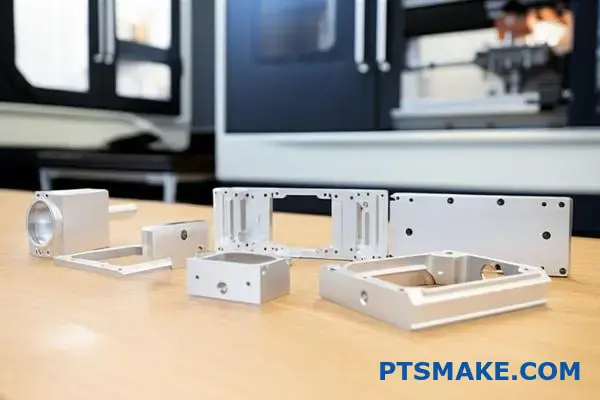
Über die gängigste Auswahl hinaus reicht das Materialspektrum für kleine CNC-Bearbeitungen weiter, aber hier werden die Grenzen deutlicher. Es geht nicht nur um was Material, sondern auch wie viel davon kann die Maschine verarbeiten.
Holz und andere Weichmetalle
Harthölzer wie Ahorn und Eiche lassen sich hervorragend bearbeiten und liefern detaillierte Ergebnisse für dekorative oder funktionelle Teile. Auch weichere Metalle wie Messing und Kupfer lassen sich gut bearbeiten. Ihre gummiartige Beschaffenheit kann jedoch zu Ablagerungen im Werkzeug führen, weshalb eine Anpassung der Bearbeitungsparameter unerlässlich ist. Wir haben in umfangreichen Tests herausgefunden, dass bestimmte Kombinationen von Kühlmittel und Werkzeugbeschichtung dieses Problem wirksam mindern können.
Die wahren Grenzen: Dicke und Härte
Die Haupteinschränkungen sind die Steifigkeit der Maschine und die Spindelleistung. Eine kleine Maschine hat möglicherweise Schwierigkeiten mit einem dicken Aluminiumblock, der mehrere, flache Durchgänge anstelle eines tiefen Schnitts erfordert. Dies erhöht die Bearbeitungszeit. In der Regel raten wir bei Metallen oft dazu, unter einer bestimmten Dicke zu bleiben, um sowohl die Präzision als auch die Kosteneffizienz zu erhalten.
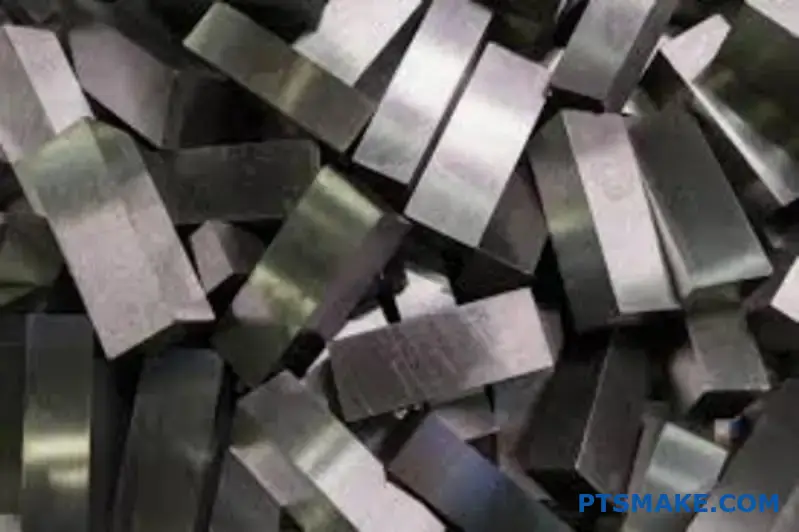
Kleine CNC-Maschinen können Materialien von Aluminium und technischen Kunststoffen bis hin zu Holz und weichen Metallen effektiv bearbeiten. Der Erfolg Ihres Projekts hängt davon ab, dass die Eigenschaften des Materials - insbesondere seine Härte und Dicke - mit den Möglichkeiten der Maschine abgestimmt werden, um Präzision und Effizienz zu gewährleisten.
Präzisionsstandards und Qualitätskontrolle in kleinen CNC-Betrieben?
Haben Sie schon einmal einen Entwurf genehmigt, um dann festzustellen, dass die hergestellten Teile aufgrund winziger Toleranzabweichungen nicht geprüft werden? Das ist eine häufige Enttäuschung, die ein ganzes Projekt zum Stillstand bringen kann.
Das Erreichen einer gleichbleibenden Präzision bei der CNC-Kleinbearbeitung erfordert ein strukturiertes Qualitätskontrollsystem. Dazu gehört die Kombination von Maschinenkapazitäten mit strengen Prozessen wie der Erstmusterprüfung (First Article Inspection, FAI), prozessbegleitenden Kontrollen und der abschließenden Überprüfung mit fortschrittlichen Messinstrumenten, die alle durch ein zertifiziertes Qualitätsmanagementsystem (QMS) geregelt werden.
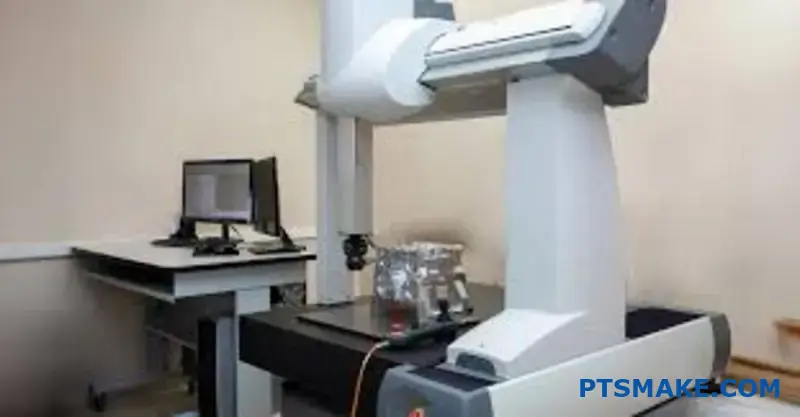
Der Grad der Präzision bei der CNC-Kleinbearbeitung hängt stark von der Maschine, dem Material und der Prozesssteuerung ab. Es geht nicht nur um die angekündigten Spezifikationen der Maschine. Nach unserer Erfahrung bei PTSMAKE ist die Einhaltung enger, konstanter Toleranzen ein Balanceakt.
Faktoren, die die Genauigkeit beeinflussen
Die endgültige Genauigkeit ist das Ergebnis des Zusammenwirkens mehrerer Faktoren. Ein steifer Maschinenrahmen minimiert Vibrationen, während eine hochwertige Spindel und scharfe Werkzeuge für saubere Schnitte sorgen. Auch die Wahl des Materials ist entscheidend. Stabile Materialien wie Aluminium 6061 sind berechenbarer als einige Kunststoffe, die sich verziehen können. Wir verwenden ein dokumentiertes Verfahren namens Wiederholbarkeit und Reproduzierbarkeit von Messgeräten4 um zu überprüfen, ob unsere Messsysteme zuverlässig sind, noch bevor wir mit der Produktion beginnen.
Typische erreichbare Toleranzen
Im Folgenden finden Sie einen allgemeinen Leitfaden für Standardtoleranzen, mit denen wir bei kleinen CNC-Bearbeitungsprojekten häufig arbeiten.
| Material | Standard-Toleranz | Engere Toleranzen (mit Prozesskontrollen) |
|---|---|---|
| Aluminium (z. B. 6061) | ±0,005" (±0,127mm) | ±0,001" (±0,025mm) |
| Rostfreier Stahl (z. B. 304) | ±0,005" (±0,127mm) | ±0,002" (±0,051mm) |
| Kunststoffe (z. B. ABS, PEEK) | ±0,010" (±0,254mm) | ±0,003" (±0,076mm) |
Engere Toleranzen als diese Normen sind möglich, erfordern aber in der Regel eine besondere Handhabung und zusätzliche Qualitätskontrollen, was sich auf die Projektfristen und -kosten auswirken kann.
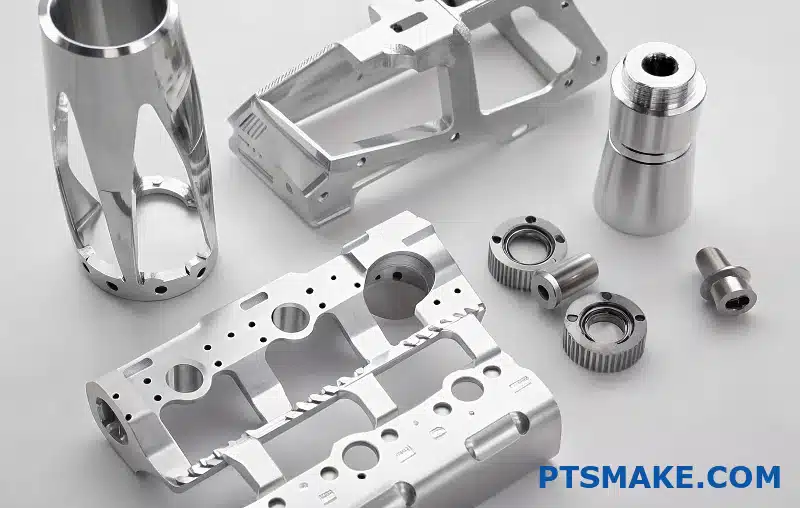
Die Leistungsfähigkeit einer Maschine ist nur die halbe Wahrheit. Echte Konsistenz ergibt sich aus einem robusten Qualitätssicherungsprozess, der das Teil vom ersten Schnitt bis zur Auslieferung überwacht. Hier macht ein dokumentiertes System den Unterschied aus und verhindert Abweichungen, bevor sie zu größeren Problemen werden.
Unser Qualitätssicherungs-Workflow
Bei PTSMAKE bildet unser ISO 9001-zertifiziertes System den Rahmen für jedes Projekt.
1. Prüfung des ersten Artikels (FAI)
Bevor wir mit einem vollen Produktionslauf beginnen, stellen wir ein einzelnes Teil her und prüfen alle Abmessungen anhand des Drucks. Dieser FAI-Bericht wird intern dokumentiert und genehmigt, um sicherzustellen, dass unsere Einrichtung und Programmierung perfekt sind.
2. Prozessbegleitende Qualitätskontrolle (IPQC)
Wir warten nicht einfach bis zum Schluss. Unsere Mitarbeiter führen während des gesamten Bearbeitungsprozesses regelmäßige Kontrollen in bestimmten Abständen durch. So können wir Werkzeugverschleiß oder Maschinenabweichungen frühzeitig erkennen und die Konsistenz über die gesamte Charge hinweg gewährleisten.
3. Endgültige Qualitätskontrolle (FQC)
Jedes Teil wird mit kalibrierten Werkzeugen wie digitalen Messschiebern, Mikrometern und Koordinatenmessgeräten (CMM) für komplexe Geometrien einer Endkontrolle unterzogen. Dieser letzte Schritt garantiert, dass wir genau das liefern, was Sie bestellt haben.
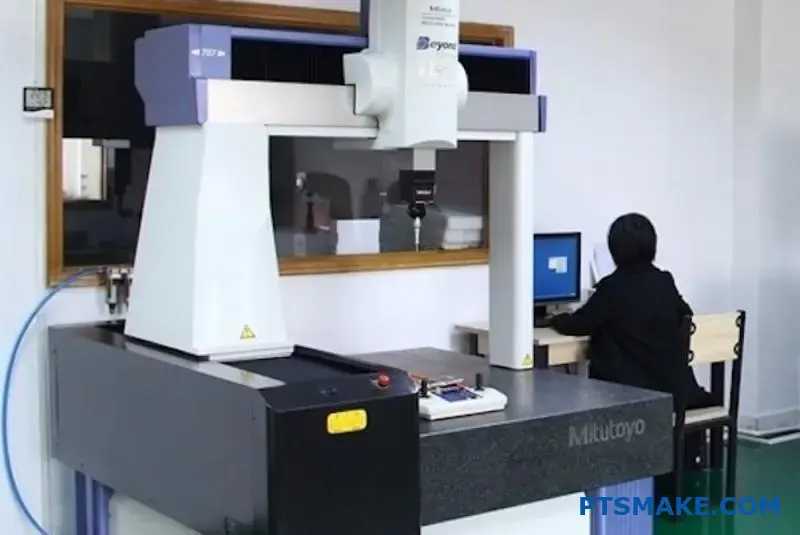
Zusammenfassend lässt sich sagen, dass die Aufrechterhaltung einer hohen Präzision bei kleinen CNC-gefertigten Teilen kein Zufall ist. Sie beruht auf einem tiefgreifenden Verständnis der Maschinenfähigkeiten in Kombination mit einem strengen, mehrstufigen Qualitätssicherungsprozess, der FAI, prozessbegleitende Prüfungen und eine Endkontrolle umfasst, die durch ein zertifiziertes QMS geregelt wird.
Vorlaufzeiten und Produktionsgeschwindigkeit bei Aufträgen in kleinen Mengen?
Haben Sie sich jemals Sorgen gemacht, dass ein knapper Termin für einen wichtigen Prototyp nicht eingehalten werden kann? Machen Sie sich Stress wegen Produktionsverzögerungen, wenn Sie schnell kleine Chargen von Teilen benötigen?
Für kleine CNC-Bearbeitungen liegen die Standardvorlaufzeiten in der Regel zwischen 7 und 15 Werktagen. Faktoren wie Komplexität, Materialverfügbarkeit und Endbearbeitung können dies jedoch ändern. Viele Werkstätten, darunter auch wir bei PTSMAKE, bieten Eildienste an, die bei dringendem Bedarf Teile in nur 3-5 Tagen liefern.
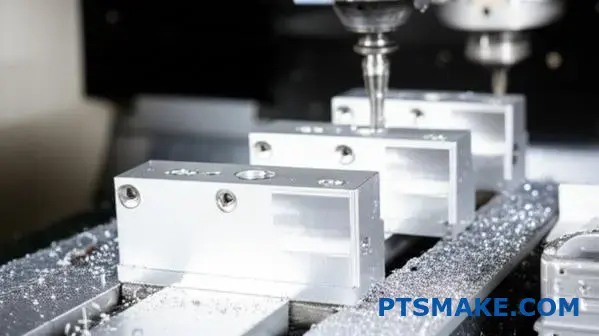
Das versprochene Lieferdatum ist nicht einfach eine zufällige Zahl, sondern eine Berechnung, die auf mehreren Schlüsselvariablen beruht. Der größte Faktor ist häufig die Materialverfügbarkeit. Die Beschaffung von Standardaluminium 6061 ist schnell erledigt, aber eine spezielle Edelstahlsorte oder ein exotisches Polymer kann den Zeitplan um eine Woche verlängern, bevor ein Span überhaupt geschnitten ist. Die Komplexität der Teile folgt dicht dahinter. Eine einfache gedrehte Welle erfordert nur eine minimale Programmierung und Einrichtung, während ein mehrachsig gefrästes Gehäuse mit engen Toleranzen erhebliche CAM-Arbeiten und eine sorgfältige Maschineneinrichtung erfordert. Die Optimierung des gesamten Arbeitsablaufs zur Verwaltung der Zykluszeit5 für jeden einzelnen Schritt ist von grundlegender Bedeutung. Mit diesem Fokus auf Effizienz in der kleinen CNC-Bearbeitung liefern wir unseren Kunden zuverlässige Zeitpläne.
| Faktor | Auswirkungen auf die Standardvorlaufzeit |
|---|---|
| Materialbeschaffung | Addiert 1-10+ Arbeitstage |
| Teil Komplexität | Erhöht 1-5+ Arbeitstage |
| Oberflächenbehandlung | Erhöht 1-3+ Werktage |
| Anforderungen an die Inspektion | Addiert 1-2+ Arbeitstage |
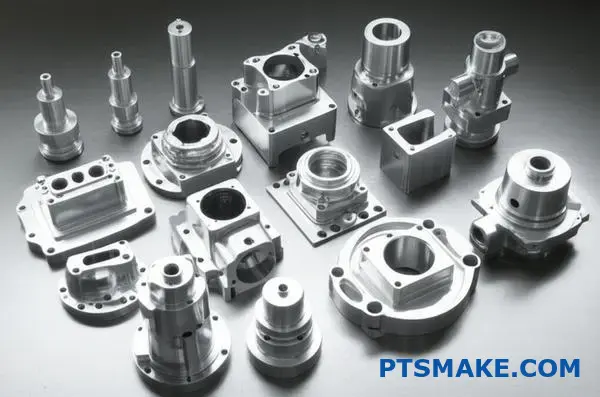
Wie kann eine CNC-Maschinenwerkstatt also schnellere Durchlaufzeiten für dringende Fertigungsanforderungen bieten? Der Schlüssel liegt in der betrieblichen Flexibilität, insbesondere bei der Bearbeitung von Eilaufträgen. Im Gegensatz zu massiven Produktionsanlagen, die an hohe Stückzahlen gebunden sind, können Betriebe, die auf Kleinserienfertigung spezialisiert sind, schnell umschalten. Bei früheren Projekten von PTSMAKE haben wir enge Fristen erfolgreich eingehalten, indem wir spezielle Maschinenzellen genutzt haben, die für Rapid Prototyping und dringende Aufträge reserviert sind. So wird sichergestellt, dass ein kleiner, aber wichtiger Auftrag nicht in einer langen Produktionswarteschlange verloren geht. Darüber hinaus kann die Implementierung einer automatisierten Angebotserstellung und einer rationalisierten CAM-Programmierung in der Anfangsphase viel Zeit einsparen. Diese Flexibilität ist ein Hauptvorteil der spezialisierten kleinen CNC-Bearbeitungsdienste, die eine schnelle Reaktion auf dringende Kundenanforderungen ermöglichen, ohne die Endqualität der Teile zu beeinträchtigen.
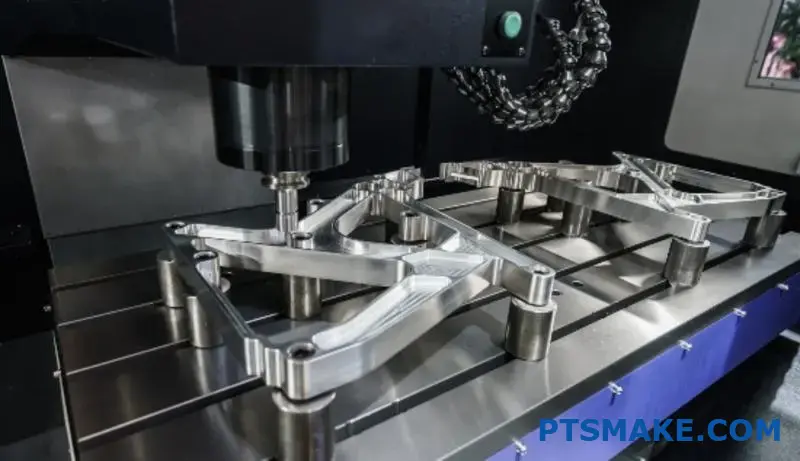
Für kleine CNC-Bearbeitungsaufträge müssen Sie mit einer Vorlaufzeit von 7-15 Tagen rechnen, wobei Eiloptionen verfügbar sind. Die Fristen hängen in hohem Maße von der Komplexität der Teile und der Materialbeschaffung ab. Durch den Einsatz spezieller Maschinenzellen und rationalisierter Front-End-Prozesse für dringende Projekte können jedoch schnellere Durchlaufzeiten erzielt werden.
Wie wählen Sie den richtigen Partner für die CNC-Bearbeitung von Kleinteilen?
Haben Sie sich schon einmal aufgrund eines günstigen Angebots für einen Lieferanten entschieden, nur um dann mit endlosen Verzögerungen und unpassenden Teilen konfrontiert zu werden? Dieses Glücksspiel kann Ihren gesamten Projektzeitplan und Ihr Budget zum Scheitern bringen.
Bei der Wahl des richtigen Partners für die CNC-Bearbeitung von Kleinteilen kommt es nicht nur auf den Preis an. Sie müssen deren technische Fähigkeiten, Qualitätskontrollsysteme, Kommunikationsstandards und ihr Potenzial als langfristiger Partner sorgfältig bewerten, um Zuverlässigkeit und Erfolg zu gewährleisten.
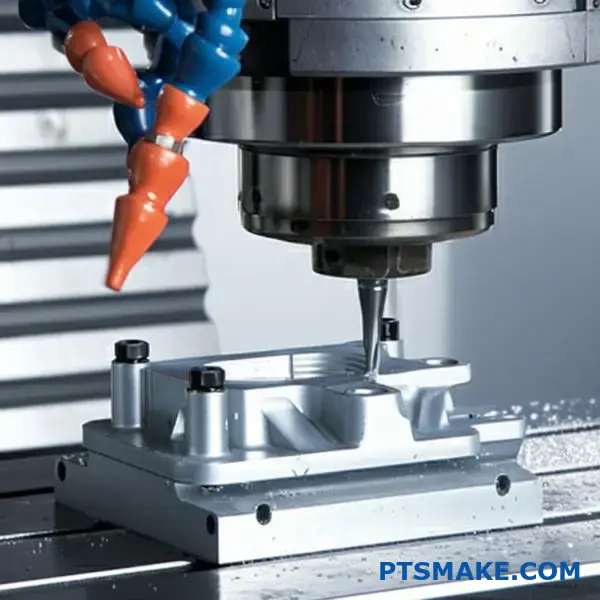
Achten Sie bei der Auswahl eines Partners zunächst auf dessen technische Grundlagen. Verfügt er über die richtige Ausrüstung für die Komplexität Ihres Projekts? Ein Betrieb, der nur über 3-Achsen-Maschinen verfügt, hat möglicherweise Schwierigkeiten mit Teilen, die eine 5-Achsen-Simultanbearbeitung erfordern. Bei PTSMAKE haben wir festgestellt, dass ein vielfältiger Maschinenpark der Schlüssel zu flexiblen Lösungen ist. Achten Sie auch auf Qualitätszertifizierungen wie ISO 9001. Dies ist nicht nur ein Stück Papier, sondern ein Beweis für die Verpflichtung zu konsistenten, dokumentierten Prozessen, die Fehler reduzieren. Die Fähigkeit des Lieferanten, komplexe Konstruktionsspezifikationen zu verstehen und zu interpretieren, einschließlich Aspekten wie Geometrische Bemaßung und Tolerierung6ist ein entscheidender Indikator für ihre Kompetenz.
Technische und qualitative Schlüsselindikatoren
| Kriterium | Was zu beachten ist | Warum es wichtig ist |
|---|---|---|
| Maschinenpark | 3-Achsen-, 4-Achsen-, 5-Achsen-CNC-Maschinen; Drehbänke | Gewährleistet die Fähigkeit für unterschiedliche Teilekomplexitäten. |
| Zertifizierungen | ISO 9001, AS9100 (für die Luft- und Raumfahrt) | Nachweis eines standardisierten Qualitätsmanagementsystems. |
| Inspektion | CMM, Messschieber, Mikrometer, optische Komparatoren | Garantiert, dass die Teile gemäß Ihren Spezifikationen gemessen werden. |
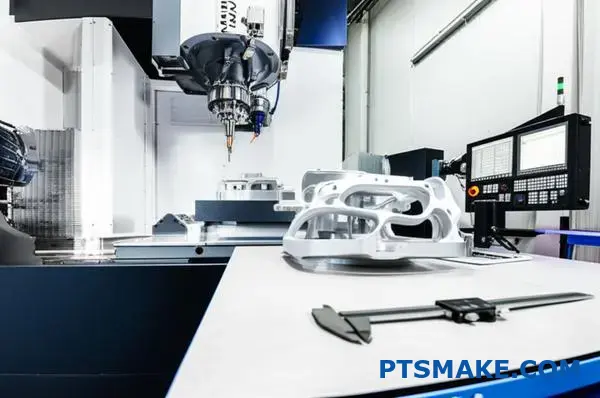
Neben der Hardware und den Zertifizierungen ist es das menschliche Element, das einen Lieferanten zu einem echten Partner macht. Die Art und Weise, wie ein Unternehmen mit Ihnen kommuniziert und Ihr Projekt verwaltet, ist ebenso wichtig wie die Art und Weise, wie es Metall bearbeitet. Ein zuverlässiger Partner für kleine CNC-Bearbeitungen hält Sie proaktiv auf dem Laufenden, bespricht Herausforderungen transparent und arbeitet mit Ihnen zusammen, um Lösungen zu finden. Der Projektmanagementprozess sollte klar sein, mit definierten Meilensteinen von der Angebotserstellung bis zur endgültigen Lieferung. In der Vergangenheit haben wir die Erfahrung gemacht, dass ein engagierter Projektmanager, der Ihre Ziele versteht, den Unterschied ausmachen kann. Dieser Ansatz bildet die Grundlage für eine langfristige Beziehung, in der sich der Lieferant wie eine Erweiterung Ihres eigenen Teams fühlt, das in Ihren Erfolg investiert.
Bewertung des Partnerschaftspotenzials
| Aspekt | Rote Flagge | Grüne Flagge |
|---|---|---|
| Kommunikation | Langsame Antworten, vage Antworten | Proaktive Aktualisierungen, klarer und direkter Kontakt |
| Projektleitung | Kein klarer Zeitplan oder Prozess | Dedizierte Kontaktstelle, regelmäßige Berichte |
| Problemlösung | Gibt dem Kunden die Schuld für Probleme | Übernimmt Verantwortung, bietet Lösungen an |
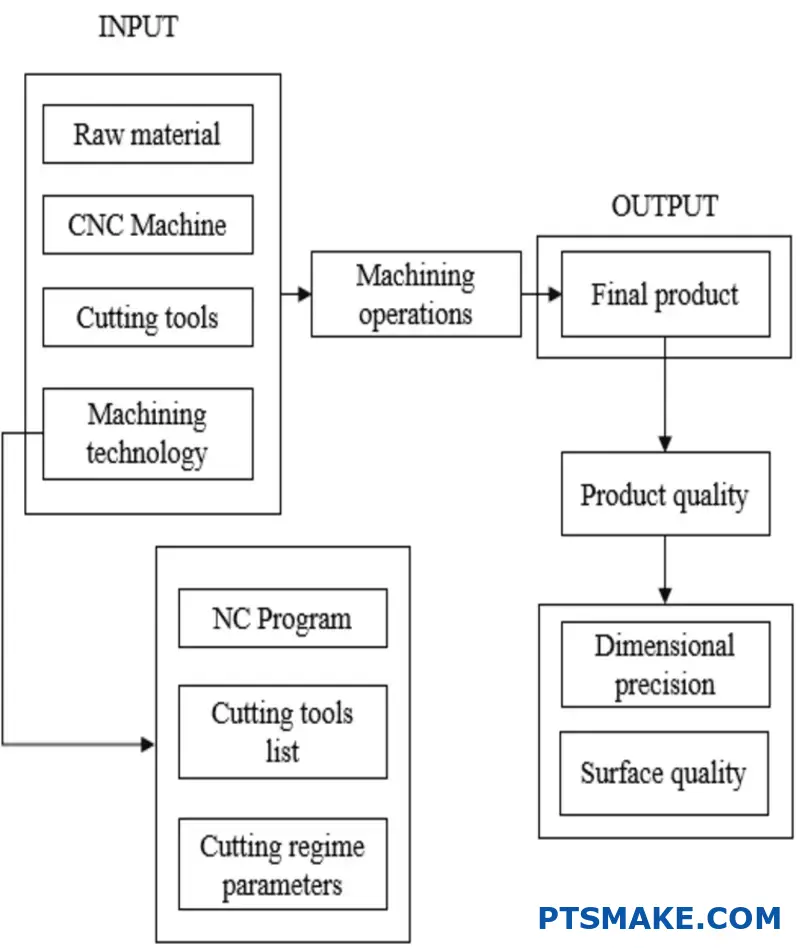
Die Wahl des richtigen Partners für kleine CNC-Bearbeitungszentren erfordert eine ganzheitliche Betrachtung. Gleichen Sie deren technische Fähigkeiten und Qualitätssysteme mit deren Kommunikationsstil und Projektmanagement ab. Dieser doppelte Fokus gewährleistet, dass Sie qualitativ hochwertige Teile erhalten und eine zuverlässige, langfristige Fertigungsbeziehung aufbauen können.
Einrichtungsanforderungen und technische Spezifikationen?
Haben Sie schon einmal Ihre kleine CNC-Maschine eingerichtet, alle Optionen für Leistung und Software geprüft und trotzdem nicht die gewünschte Präzision erreicht? Es ist frustrierend, wenn einzelne Komponenten perfekt zu sein scheinen, aber das gesamte System nicht die gewünschte Leistung erbringt.
Der Schlüssel zu optimaler Leistung bei kleinen CNC-Bearbeitungen liegt in der Integration aller technischen Spezifikationen. Wahre Präzision entsteht, wenn Arbeitsbereich, Stromversorgung, Werkzeuge und Software nahtlos zusammenarbeiten, um Engpässe zu beseitigen und ein wirklich effizientes System zu schaffen.
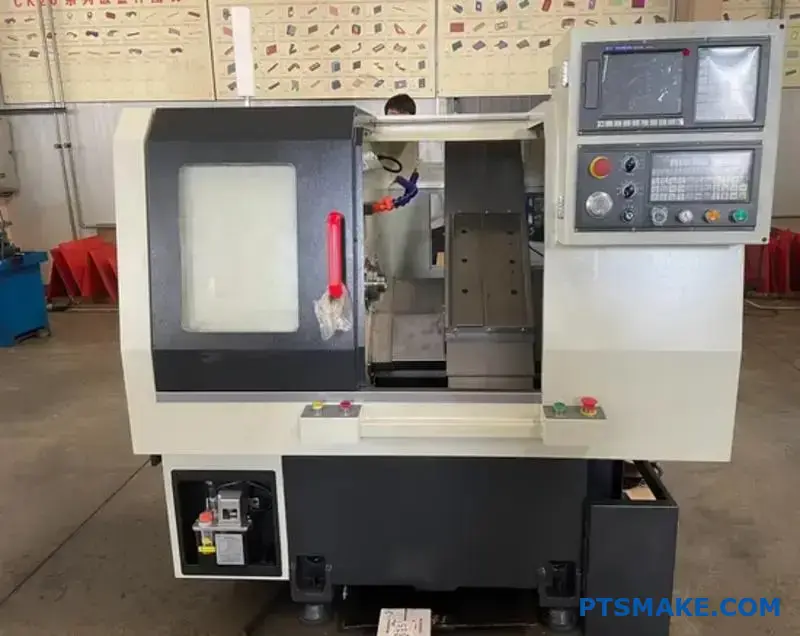
Wahre Präzision bei der CNC-Kleinbearbeitung ergibt sich aus der Synergie zwischen den Komponenten, nicht nur aus ihrer individuellen Qualität. Ein häufiges Versäumnis ist die Beziehung zwischen Ihrer Stromquelle und der Wahl der Werkzeuge. Dieses Zusammenspiel ist entscheidend für das Erreichen der feinen Details und Oberflächengüten, die bei Hochpräzisionsarbeiten erforderlich sind. Eine instabile Stromversorgung kann zu geringfügigen Schwankungen der Spindeldrehzahl führen, was sich direkt auf die Qualität des Schnitts auswirkt, insbesondere bei empfindlichen Werkzeugen. Das gesamte mechanische System, oder Kinematische Kette7ist auf diese Stabilität angewiesen. Bei früheren Projekten von PTSMAKE haben wir Unzulänglichkeiten auf scheinbar geringfügige Leistungsabfälle zurückgeführt, die die Leistung der Werkzeuge beeinträchtigten.
Die Power-Tooling-Verbindung
Stabile Leistung für konsistente Schnitte
Selbst ein kurzzeitiger Spannungsabfall kann die Spindeldrehzahl verändern, was zu Werkzeugrattern und sichtbaren Defekten auf der Oberfläche des Werkstücks führt.
Werkzeuge und Maschinenleistung aufeinander abstimmen
Die Verwendung von aggressiven Werkzeugen auf einer untermotorisierten Spindel führt zu schlechter Genauigkeit und Werkzeugbruch.
| Leistungsstabilität | Spindeldrehzahl | Leistung der Werkzeuge | Ergebnis der Bearbeitung |
|---|---|---|---|
| Stabil & sauber | Einheitlich | Optimal | Hohe Präzision |
| Schwankend | Inkonsistent | Schlecht | Chatter & Defekte |
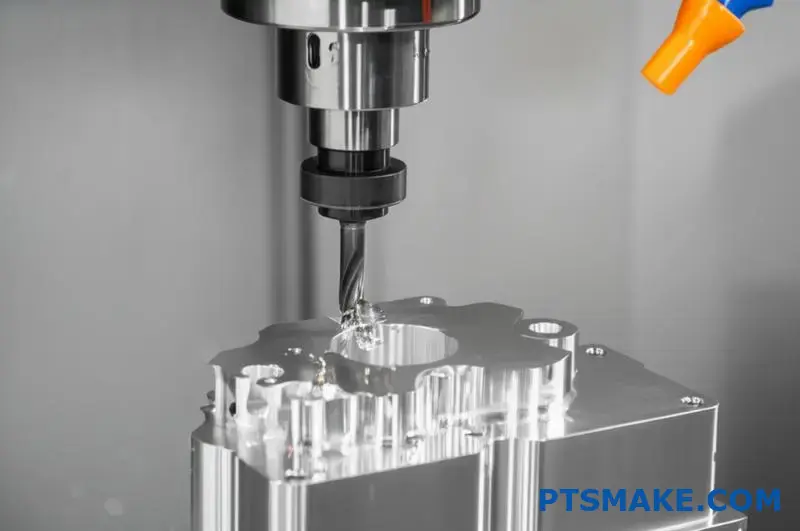
Ein weiterer wichtiger Integrationspunkt ist die Verbindung zwischen Ihrer digitalen Designumgebung und dem physischen Arbeitsbereich. Ihre CAM-Software kann einwandfreie Werkzeugwege generieren, aber sie sind bedeutungslos, wenn die physische Einrichtung sie nicht getreu ausführen kann. Der Arbeitsbereich ist nicht nur ein Ort, an dem Sie Ihre Maschine aufstellen, sondern er ist die Grundlage Ihres gesamten Betriebs. Bei PTSMAKE behandeln wir die physische Einrichtung mit der gleichen Liebe zum Detail wie unsere digitale Programmierung. Dieser umfassende Ansatz ist entscheidend für die Umsetzung komplexer Entwürfe in greifbare, hochwertige Teile.
Digitale und physische Welten überbrücken
Der Arbeitsbereich als physische Grundlage
Vibrationen von einem unebenen Boden oder nahe gelegenen Geräten können sich direkt auf Ihr Werkstück übertragen und die Präzision Ihres G-Codes untergraben. Eine starre, ebene und isolierte Unterlage ist für kleine CNC-Bearbeitungen nicht verhandelbar.
Kalibrierung der Software für Ihr Gerät
Die Software muss auf die einzigartigen Gegebenheiten Ihrer Maschine kalibriert werden, einschließlich Spielkompensation und Werkzeugversatz, um sicherzustellen, dass das fertige Teil perfekt mit dem digitalen Modell übereinstimmt.
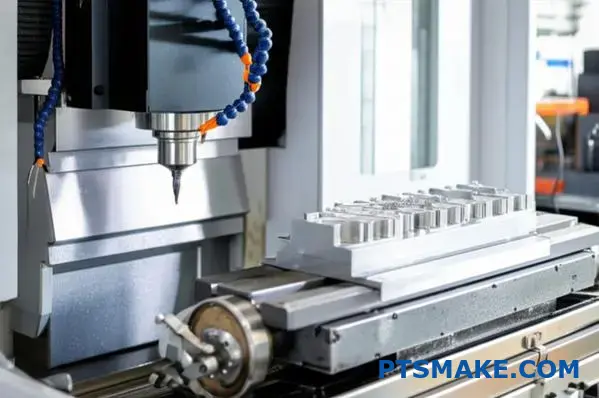
Eine erfolgreiche kleine CNC-Bearbeitung hängt von einer ganzheitlichen Strategie ab. Es geht darum, zu verstehen, wie die technischen Spezifikationen für Leistung, Werkzeuge, Software und den Arbeitsbereich miteinander verbunden sind. Diese Synergie ist die Grundlage für die Erzielung hochpräziser Ergebnisse, die ein gutes Projekt in ein außergewöhnliches verwandeln.
Allgemeine Anwendungen und Anwendungsfälle in der Industrie?
Haben Sie sich jemals gefragt, wo die Präzision der kleinen CNC-Bearbeitung wirklich zum Tragen kommt? Es ist leicht zu übersehen, wie diese Technologie die komplexen Geräte und Systeme antreibt, auf die wir uns jeden Tag verlassen.
Die CNC-Kleinstbearbeitung ist für die Herstellung hochpräziser Komponenten in verschiedenen Sektoren von entscheidender Bedeutung. Zu den wichtigsten Anwendungen gehören das Rapid Prototyping, die Herstellung kundenspezifischer Teile und die Produktion von Kleinserien für Branchen wie die Medizintechnik, die Luft- und Raumfahrt, die Automobilindustrie und die Unterhaltungselektronik, wo enge Toleranzen unerlässlich sind.
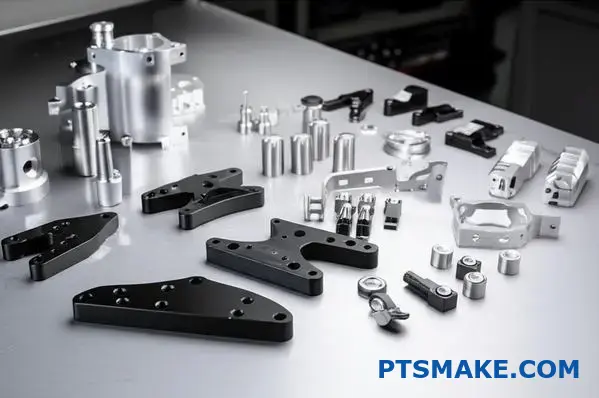
Die Vielseitigkeit der kleinen CNC-Bearbeitung macht sie zu einem Eckpfeiler in der Produktentwicklung und der Spezialfertigung. Ihr Einfluss ist schon lange vor der Massenproduktion eines Produkts zu spüren. In der Robotik zum Beispiel erfordert die Herstellung kundenspezifischer Gelenke und Verbindungen mit präzisen Bewegungen ein tiefes Verständnis der Komponenten Kinematik8. Bei PTSMAKE haben wir aus erster Hand erfahren, wie Ingenieure diese Technologie nutzen, um komplexe Ideen zum Leben zu erwecken.
Vom Konzept zur Realität: Rapid Prototyping
Ingenieure müssen ihre Entwürfe schnell validieren. Die kleine CNC-Bearbeitung liefert Prototypen mit endgültigen Materialeigenschaften, ein wesentlicher Vorteil gegenüber anderen Methoden für Funktionstests.
Spezialisierte Komponenten für Nischenbedürfnisse
Dieses Verfahren eignet sich hervorragend für die Herstellung kundenspezifischer Vorrichtungen und Ersatzteile für ältere Geräte und beweist damit seine Flexibilität.
| Anmeldung | Hauptvorteil der kleinen CNC-Bearbeitung | Gemeinsame Industrie |
|---|---|---|
| Schnelles Prototyping | Materialgetreue Funktionsprüfung | Elektronik, Medizin |
| Kundenspezifische Teile | Hohe Präzision für einzigartige Anforderungen | Automobilindustrie, Robotik |
| Kleinserienproduktion | Kostengünstig für Kleinserien | Luft- und Raumfahrt, Spezialmaschinenbau |
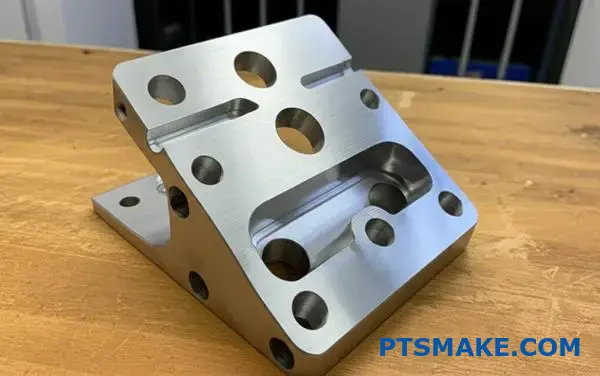
Über die Entwicklung hinaus ist die kleine CNC-Bearbeitung ein Rückgrat für die Herstellung kritischer Teile für den Endgebrauch, insbesondere dort, wo ein Ausfall nicht in Frage kommt. Die Möglichkeit, eine breite Palette von Werkstoffen in technischer Qualität zu bearbeiten, macht sie für anspruchsvolle Anwendungen unverzichtbar. Bei früheren Projekten haben wir festgestellt, dass die Wahl des Werkstoffs ebenso entscheidend ist wie der Bearbeitungsprozess selbst, um die Leistung und Langlebigkeit der Komponenten zu gewährleisten.
Energie für kritische Industrien
Sektor Medizinische Geräte
Bei chirurgischen Werkzeugen, maßgeschneiderten Implantaten und Komponenten für Diagnosegeräte, für die häufig biokompatible Materialien wie Titan und PEEK verwendet werden, ist Präzision von größter Bedeutung.
Automobilindustrie und Luft- und Raumfahrt
Diese Technologie wird für leistungskritische Komponenten in Motoren und Sensoren sowie für kundenspezifische Innenausstattungen verwendet, bei denen sowohl Festigkeit als auch geringes Gewicht entscheidend sind.
Unterhaltungselektronik
Komplizierte Aluminiumgehäuse, winzige Anschlüsse und interne Halterungen für Geräte wie Smartphones, Drohnen und Kameras werden häufig mit Hilfe kleiner CNC-Bearbeitungsmaschinen hergestellt.
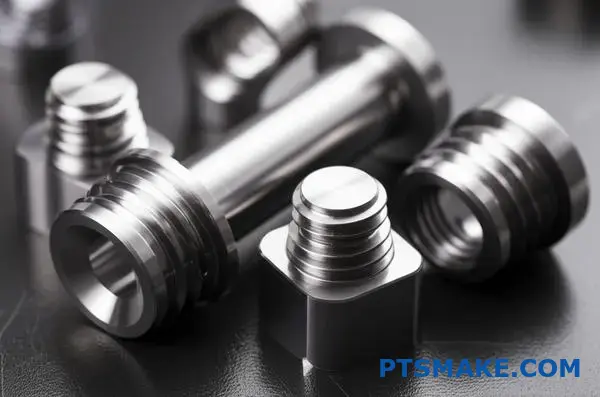
Von ersten Prototypen und kundenspezifischen Vorrichtungen bis hin zu kritischen Endverbrauchsteilen in anspruchsvollen Sektoren wie Medizin, Luft- und Raumfahrt und Elektronik ist die CNC-Kleinbearbeitung unverzichtbar. Ihre Präzision und Materialflexibilität machen sie zu einer Kerntechnologie für moderne Innovation und Fertigung in allen Bereichen.
Erfahren Sie, wie effiziente Werkzeugwege Ihre Bearbeitungszeit und -kosten drastisch reduzieren können. ↩
Entdecken Sie, wie geeignete Spannlösungen die Präzision und Effizienz Ihrer Bearbeitungsvorgänge erheblich verbessern können. ↩
Verstehen Sie, wie sich diese Richtungseigenschaft auf die Festigkeit und Integrität Ihrer CNC-gefertigten Teile auswirken kann. ↩
Erfahren Sie, wie diese Methode die Zuverlässigkeit des Messsystems validiert, um sicherzustellen, dass Ihre Qualitätsdaten vertrauenswürdig sind. ↩
Entdecken Sie, wie ein umfassendes Verständnis dieser Kennzahl Ihnen dabei helfen kann, Projektlaufzeiten besser abzuschätzen und Möglichkeiten zur Kosteneinsparung zu erkennen. ↩
Erfahren Sie, wie diese symbolische Sprache sicherstellt, dass Ihre Designabsicht perfekt in ein physisches Teil umgesetzt wird. ↩
Erfahren Sie, wie sich die mechanische Struktur der Maschine direkt auf die endgültige Genauigkeit Ihrer kleinen CNC-Bearbeitungsprojekte auswirkt. ↩
Erfahren Sie mehr über die Prinzipien der Bewegung in mechanischen Systemen, um Ihre Bauteilkonstruktion zu verbessern. ↩


